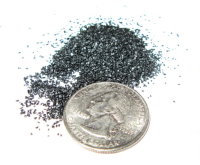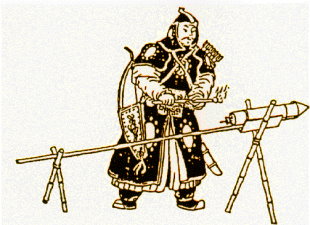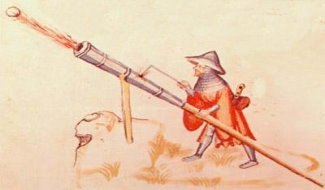Gunpowder
Explain how Europe benefited from cultural diffusion during the period c. A.D. 1000 - 1500.

Gunpowder
Ironically, it was a quest for immortality that led to the invention of the deadliest weapon before the arrival of the atomic bomb.
Experimenting with life-lengthening elixirs around A.D. 850, Chinese alchemists instead discovered gunpowder. Their explosive invention would become the basis for almost every weapon used in war from that point on, from fiery arrows to rifles, cannons and grenades.
Gunpowder made warfare all over the world very different, affecting the way battles were fought and borders were drawn throughout the Middle Ages.
Chinese scientists had been playing with saltpeter - a common name for the powerful oxidizing agent potassium nitrate - in medical compounds for centuries when one industrious individual thought to mix it with sulfur and charcoal.
The result was a mysterious powder from which, observers remarked in a text dated from the mid-9th century,
smoke and flames result, so that the scientists' hands and faces have been burnt, and even the whole house
where they were working burned down.

Early Chinese Rocket
Gunpowder was quickly put to use by the reigning Sung dynasty against the Mongols, whose constant invasions into the country plagued the Chinese throughout the period. The Mongols were the first to be subject to flying fire - an arrow fixed with a tube of gunpowder that ignited and would propel itself across enemy lines.
More gunpowder-based weapons were invented by the Chinese and perfected against the Mongols in the next centuries, including the first rockets, cannons and grenades. The psychological effect alone of the mystifying new technology likely helped the Chinese win battles against the otherwise fearless Mongols
Gunpowder somehow remained a monopoly of the Chinese until the 13th century, when the science was passed along the ancient silk trade route to Europe and the Islamic world, where it became a deciding factor in many Middle Age battles.

The Sultani Cannon, a very heavy bronze muzzle-loading cannon of type used by Ottoman Empire in the siege of Constantinople, 1453 AD.
By 1350, rudimentary gunpowder cannons were commonplace in the English and French militaries, which used the technology against each other during the Hundred Years' War.
The Ottoman Turks also employed gunpowder cannons with abandon during their successful siege of Constantinople in 1453. The powerful new weapon essentially rendered the traditional walled fortification of Europe, impregnable for centuries, weak and defenseless.
The next important step for gunpowder came when it was inserted into the barrel of a handgun, which first appeared in the mid-15th century and was essentially a cannon shrunk down to portable size. Guns literally put weaponry into the hands of the individual, creating a new class of soldier - infantry - and giving birth to the modern army.

Hand cannon being fired from a stand, c. 1400
Gunpowder is still the basis for many modern weapons, including guns, though it is certainly no longer the most explosive force available to armies.
Need to celebrate a victory in battle? Gunpowder is there for you. The powder is also at the heart of the fireworks that make the Fourth of July and other holidays so special. To produce the aerial spray of reds, golds and blues, pyrotechnicians pack a tube with gunpowder, colorizing chemicals and small pellets that create the shape and shimmer of the firework.
